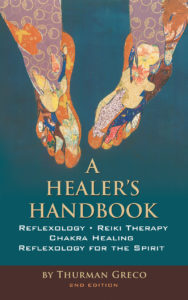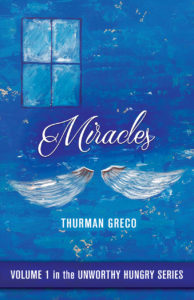What is the Practical Application? – Part 1
In our last post, we discussed hand health.
As a Reflexology for the Spirit practitioner, your focus is on the physical, mental, emotional, and spiritual aspects of a person’s health. Your job is to facilitate homeostasis.
This process begins when a person calls for an appointment. How did the person on the phone hear about you? Has this person ever received reflexology before…or any other bodywork? Does the person practice yoga, tai chi, etc.? Are there regular visits to a chiropractor? If the answer to any of these questions is “yes”, try to schedule your appointment within 24-48 hours of one of these activities.
Keep the paperwork to a minimum…especially for the first 4-5 visits. Focus on the feet…or hands. You’re going to learn what you need without a lot of forms. After several visits, your client partner will willingly and happily tell you everything you need to know. Then you can begin to build in-depth information charts and files.
When a person arrives for the first visit, offer several cd’s to choose from, and anoint your client with an essential oil which you feel is appropriate. Don’t go overboard here on the oil selection. If the oils are good quality, whichever one you two agree on will be good. There are some very professional reflexologists practicing with fewer than 5 oils in the arsenal. And, there is at least one who uses 2 oils exclusively.
As you begin to offer warm ups and work the feet, please notice the spiritual health clues they will offer you. Are the feet a particular color? Do you see bruises? What about corns, calluses, bunions, patches of thickened skin, hammertoes, etc? Are the arches high or low? Where are your findings located?
Generally speaking, when you encounter corns, calluses, bunions, thickened skin, swollen areas (edema), the person is in a protection mode. If you observe areas that are sunken, the person has “shut down” in some area.
Thanks again for reading this blogged book. If you have any comments, questions, please contact me.
As always, this post comes to you from my Woodstock healing space.
Peace and food for all.
Thurman Greco
The next post will continue with practical applications of Reflexology for the Spirit.
Maintaining Good Hand Health For Yourself Is Important
Holding your wrists straight is the difference between having a 2-year career as a practitioner and having a 20-year career.
If you find that you must do wrist gymnastics to offer a session, read the instructions again. Adjust the height of your stool or chair, hold the person’s foot in a different way, etc. Do whatever is necessary to protect the health of your hands.
Are you comfortable as you work? If not, you won’t provide a good session.
It’s not necessary to inflict pain in order to be a good Reflexology for the Spirit practitioner. As a matter of fact, many successful practitioners offer a light touch to their clients. You don’t want your touch to be so light that you’re tickling your client partners. But, it’s not necessary to be super heavy either.
So, what do you do if a client insists that your touch is too light and that you should “go deeper” because s/he doesn’t feel anything or because s/he received a session 30 years ago and the reflexologist offered very deep, painful work?
Don’t compromise your standards, your practice, or your thumbs. End the session. Let the person return to the reflexologist who offered the pain in the past.
There is another important reason for this: sometimes people don’t feel anything because they have insufficient, or no, feeling in their feet. This is a health issue. They need to see their primary care health professional.
Don’t get sucked into their illness. If you do, you’ll run the risk of damaging their feet as well as your hands in your effort to offer a session to a person who can’t feel much.
Thanks for reading this post. I hope you found the information helpful. Please leave a comment if you have a question or other observation.
In the next two posts, we’ll focus on the practical application for Reflexology for the Spirit.
As always, this information comes to you from my Woodstock Healing Space.
Peace and food for all.
Thurman Greco
The First Step in a Reflexology Session – Part 3
This is the last part of the section on greeting and assessing your client partner. In the previous post, we discussed how the different colors on the feet reflect spiritual issues in a person’s life.
As you study this blogged book further, you’ll learn that each of the things noted in the past two posts has a meaning for you not only for what the observation is but where it is found.
Notice where the feet point when your client partner is on the table. Do the feet point up? Does one foot point out to the side? Do they both point out to the side? Do they both point in the same direction? Do they point inward? Are they crossed at the ankles?
Generally, when a person walks into your healing space with the toes pointed out or inward, s/he has back problems.
On the table, if the toes are pointing outward, the person is pretty open. Some people point their toes inward, and some even cross their feet. If this is the case, the person probably has strong protection issues.
If a person comes to your table with feet that are unpleasant to look at and smell, clean them off with a warm, wet wash cloth. Feel free to spritz them with a cleansing spray.
If a person comes to your table with sweaty, smelly feet, you also have the option of offering hand or ear reflexology. Or, you can even wear gloves. Whatever you do, please remember that a person with smelly, sweaty feet is suffering terribly and is probably in a fight or flight situation of some kind because sweating feet are generally caused by the nervous system working overtime. The operative words here are anxiety, anger, nervousness, etc.
Don’t be afraid to address this situation with your client. The person needs to get a diagnosis from a primary healthcare provider. Smelly, sweaty feet often need medical attention that you as a reflexologist cannot provide. Fungus on the feet needs to be treated by a podiatrist or other professional.
However, don’t worry about a person coming to your table with unpleasant feet. For the most part, this just doesn’t happen. Most people arrive with gorgeous feet. Often, when a person has received a gift certificate, s/he will go to the nail salon before coming for the Reflexology for the Spirit session.
In our next post, we’ll discuss important information you need to know as a Reflexology for the Spirit practitioner or as a regular reflexologist, for that matter.
I hope you found these last three posts helpful. Please leave comments below if you have any questions, etc.
Thanks again for joining me on this journey.
Peace and food for all
Thurman Greco
Woodstock
The First Step in a Reflexology Session – Part 2
In the last post, we discussed welcoming your client partner into your healing space, gaining trust, and offering essential oils. We’re now going to begin the healing process.
Remove the socks. Cover the feet with a towel. Rotate the ankles 4 or 5 times clockwise and then counterclockwise. This ankle rotation will tell you much about the person’s physical, mental, and spiritual health. As you develop your practice, you may find other things that have more meaning for you than the ankle rotation. For now, try the ankle rotations and see how they help give insight into your client partner’s needs.
Observe the skin.
Look for: hard skin, dry flaky skin, cuts, odor, pigmentation, color (red, yellow, pink, white, orange). Are there skin cracks, crevices, swelling, calluses, corns, sores, flaking? Where are your findings located? There are references to all of these things throughout the blog/book.
Hard skin and thickened skin patches represent places in a person’s life where extra protection is needed. Toenails will thicken up when protection is needed.
Hard cracked skin areas represent places where there are issues. An example of this is cracked heels. When you see this, you’re looking at a person with issues concerning core values. Other times it can be disease. If you see hardened skin over the thyroid area of the foot, for example, you’re probably looking at a thyroid imbalance.
The color of the feet reflects your client’s emotional and spiritual situation at the moment. White feet represent a totally stressed out person.
Red reflects anger. Sometimes, if a foot or part of a foot is red and hot, there’s a recent injury. The red heat is the blood rushing to the injury to carry off the toxins generated by the injury. This is a good thing.
Orange feet represent a person who is totally disgusted and may be experiencing a variety of emotions.
Blue and purple places on the feet represent the bruises (or may actually be the bruises) that s/he is dealing with in life.
If the total foot is not a particular color but the color is coming through in spots or places, note what these places reflex to. For example, if a person has white places on the feet in the area of the heart, you’re dealing with a client who is completely stressed out over a “love” issue.
Beyond the skin, examine the foot. Note bunions, hammertoes, flat feet, swollen feet and ankles, deformed or unhealthy nails.
Not only is it important to notice all the things on the feet and ankles, but it’s important to note where these things are.
We’ll finish the “first step” in the next post. I hope you found this helpful. Please leave your comments below and check out the other posts.
As always, this post comes to you from my Woodstock healing space.
Peace and food for all.
Thurman Greco
The First Step in a Reflexology Session – Part 1
Say “hello” with a welcoming smile and offer a safe, nurturing atmosphere which encourages the opportunity for deep relaxation and healing.
Use essential oils to enhance the aroma of the room. You may use a diffuser. Or, if you don’t have one, put a few drops of an oil on a rug or on the towel you are going to use on your client’s feet. You may decide to use just one oil always or to vary your oils with the client who is coming for a session. I know one reflexologist who uses two oils exclusively: Lavender for her female clients and Valor for her male clients.
As a person walks into your healing space, notice posture, ease of movement, gait, whether or not shoulders or hips match from one side to the other, etc.
Offer a place to leave the coat, parcels, umbrella, etc., and a place to sit down to remove shoes, (do not remove the socks yet).
Escort your client to your healing chair or table and help him/her get comfortable.
Verbal communication skills are important here, especially with a first visit. Nonverbal behavior is important also. If the person is from another culture, every effort should be made to know what is appropriate for him/her and respect the cultural, ethical, spiritual, and language differences.
If the person is new, introduce yourself by your full name and let the client decide how to address you. Always address the client formally until you have been given permission to do otherwise.
Find out what s/he thinks about his/her health problems.
Attitudes toward different health situations change from culture to culture and these differences will affect how you approach the Reflexology for the Spirit session.
Always respect a person’s values, beliefs, practices, and attitudes even if you don’t agree with them.
If family members come along, respect that in some cultures health is a family matter, not an individual situation.
If the person doesn’t show trust, do what you can to earn it, but don’t be surprised if it never develops.
Offer the client partner a drop or two of essential oil at this time. Sometimes it’s appropriate to anoint your client partner with 8-10 drops. There are many oils available. Offer 2-3 by showing them the label on the bottle and let the person choose the word most attractive to him/her.
That’s always the oil that’s accepted. Place a couple of drops of the chosen oil in the palm of one of your client partner’s hands. Instruct the person to rub the palms together and then breathe in the aroma. Wait a moment while s/he adjusts to the impact that the oil is having. Suggest s/he may want to rub his/her palms over the face, head, hair, halo, etc.
Sit at your client partner’s feet facing the plantar (bottom) portion of the feet and begin the healing process.
This subject will continue with the next post. I hope you found this information helpful. Please leave your comments or questions below and check out our other posts.
There were actually three collaborators on this book. Michele Garner was a major contributor to this post.
Peace and food for all
Thurman Greco
Woodstock, NY
What Goes Into Your Reflexology Healing Space?
 One nice thing about Reflexology for the Spirit is that you can practice is without a lot of expensive or complicated equipment or props. Your healing space doesn’t have to be the Taj Mahal.
One nice thing about Reflexology for the Spirit is that you can practice is without a lot of expensive or complicated equipment or props. Your healing space doesn’t have to be the Taj Mahal.
Reflexology for the Spirit works best if the recipient has a body length surface to lie on, face up, or a chair to sit in comfortably. This can be a massage table, sofa, recliner, or zero gravity recliner.
Often, a recliner is the practitioner’s first choice. If you have one at home, try setting up a special space in the corner of your living room, or other spare room for your healing work. Arrange it so the space is comfy and cozy. The standard reflexology furniture is a zero gravity recliner which can be purchased anywhere selling lawn furniture.
It’s fine to use your sofa, as well. When your client partner lies on the sofa face up, their feet hang over the arm.
Some practitioners use massage tables which can be folded up out of the way when not in use. The height is adjustable.
With a recliner or sofa, you’ll need a stool or small chair that can go low to the floor. (The zero gravity chair and recliner don’t fold out too high.) Massage tables are adjustable to you can use whatever chair you’re comfortable with. (It’s important for you to be comfortable, too.)
Create a sense of place that is peaceful and inviting – a ‘safe’ environment that invites the person to return, a reminder of a sense of peace. Your environment needs to say “this is your special time”. Silence the phone – no one making noise, opening doors, etc. Any other people in your home should be instructed to keep noise levels low. Purchase a white noise machine.
A massage table with several heating pads lined up under the bedding will ensure the table is warm. Turn them on a few minutes before the client partner arrives so the space is warm and friendly upon entering. Table warmers for massage tables can be expensive, and for the beginning practitioner, heating pads will do just as well.
Pillows are important. They go under the knees as well as under the head. You need towels to use under the feet as a cushion and also to protect your linens from oils and creams which you’ll be applying. Wrap a towel around each of your client partner’s feet after you work on them.
If you’re happy working in the space you create and feel it is a sacred space – so will your client.
Many practitioners play low volume music. Choose something you think will be appealing or offer a selection to choose from before beginning the session. Find your music from classical, spiritual chants, Reiki therapy music, yoga music, meditation music.
Make the décor simple and peaceful. Keep the lighting subdued.
Be certain that everything is tidy and orderly, the area clean. No one wants to receive a session in a chaotic atmosphere.
Things need to be kept clean also. People are coming and going; they could come with a few germs, pick up a few when with you (hopefully not), or leave a few. After each session, change the linens. Wash everything with a disinfectant or 1% bleach solution. Whatever you choose, its gotta be clean.
I hope you found this post helpful. Please leave your comments below and check out other posts.
The next post will focus on the first step in a reflexology session. This focus will cover two posts.
Thanks again.
Thurman Greco
Woodtock, NY






